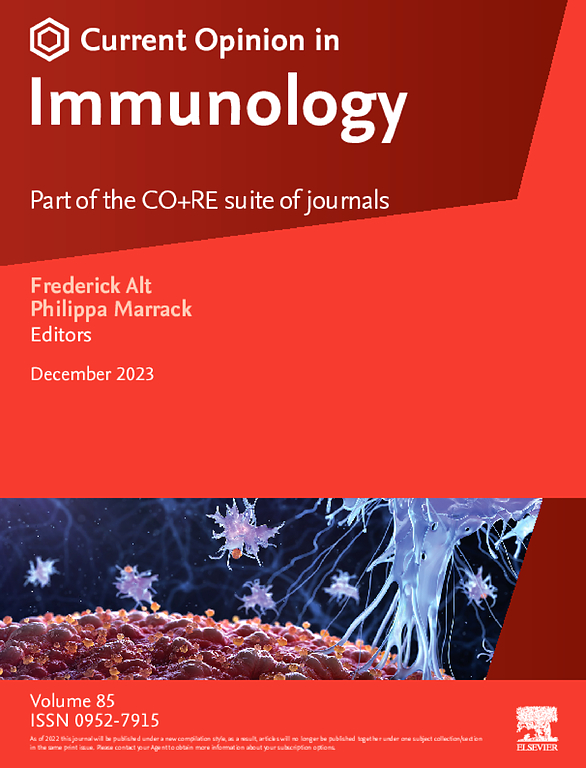白癜风的表观遗传调控:机制、挑战和治疗机会
IF 5.8
2区 医学
Q1 IMMUNOLOGY
引用次数: 0
摘要
白癜风的特点是表皮黑色素细胞丢失,导致皮肤色素沉着,影响全球数百万人。本文综述了其发病机制,强调了表观遗传机制如DNA甲基化、组蛋白修饰、非编码rna、染色质重塑和三维基因组调控的作用。这些机制与遗传和环境因素相互作用,导致黑素细胞的破坏。DNA甲基化失调,特别是在TYR和POMC等基因中,会破坏黑素细胞的稳态。组蛋白修饰失衡,包括过量的组蛋白去乙酰化酶(HDAC)激活,促进黑素细胞凋亡。非编码rna,如miR-211和lncRNAs,调节基因表达和免疫反应。染色质重塑和三维基因组相互作用进一步影响基因表达,影响黑色素形成。尽管取得了进步,但挑战依然存在,包括样本异质性、有限的模型系统和数据集成的复杂性。未来的方向包括多组学研究、类器官模型和个性化治疗。表观遗传药物如HDAC抑制剂和CRISPR-dCas9显示出希望,联合治疗提供协同效应。这篇综述强调了表观遗传学在推进白癜风研究和临床应用中的潜力。本文章由计算机程序翻译,如有差异,请以英文原文为准。
Epigenetic regulation in vitiligo: mechanisms, challenges, and therapeutic opportunities
Vitiligo, characterized by epidermal melanocytes loss causing skin depigmentation, affects millions globally. This review explores its pathogenesis, emphasizing the role of epigenetic mechanisms such as DNA methylation, histone modification, noncoding RNAs, chromatin remodeling, and 3D genome regulation. These mechanisms interact with genetic and environmental factors, contributing to melanocyte destruction. DNA methylation dysregulation, particularly in genes such as TYR and POMC, disrupts melanocyte homeostasis. Histone modification imbalances, including excessive histone deacetylase (HDAC) activation, promote melanocyte apoptosis. Noncoding RNAs, such as miR-211 and lncRNAs, regulate gene expression and immune responses. Chromatin remodeling and 3D genome interactions further influence gene expression, impacting melanogenesis. Despite advancements, challenges remain, including sample heterogeneity, limited model systems, and data integration complexities. Future directions include multiomics studies, organoid models, and personalized treatments. Epigenetic drugs like HDAC inhibitors and CRISPR-dCas9 show promise, with combination therapies offering synergistic effects. This review underscores the potential of epigenetics in advancing vitiligo research and clinical applications.
求助全文
通过发布文献求助,成功后即可免费获取论文全文。
去求助
来源期刊
CiteScore
13.30
自引率
1.40%
发文量
94
审稿时长
67 days
期刊介绍:
Current Opinion in Immunology aims to stimulate scientifically grounded, interdisciplinary, multi-scale debate and exchange of ideas. It contains polished, concise and timely reviews and opinions, with particular emphasis on those articles published in the past two years. In addition to describing recent trends, the authors are encouraged to give their subjective opinion of the topics discussed.
In Current Opinion in Immunology we help the reader by providing in a systematic manner: 1. The views of experts on current advances in their field in a clear and readable form. 2. Evaluations of the most interesting papers, annotated by experts, from the great wealth of original publications.
Current Opinion in Immunology will serve as an invaluable source of information for researchers, lecturers, teachers, professionals, policy makers and students.
Current Opinion in Immunology builds on Elsevier''s reputation for excellence in scientific publishing and long-standing commitment to communicating reproducible biomedical research targeted at improving human health. It is a companion to the new Gold Open Access journal Current Research in Immunology and is part of the Current Opinion and Research(CO+RE) suite of journals. All CO+RE journals leverage the Current Opinion legacy-of editorial excellence, high-impact, and global reach-to ensure they are a widely read resource that is integral to scientists'' workflow.

 求助内容:
求助内容: 应助结果提醒方式:
应助结果提醒方式:


